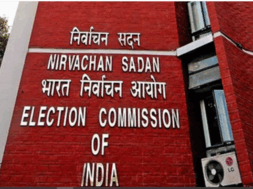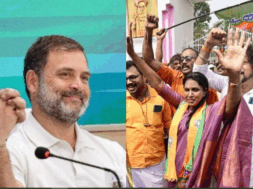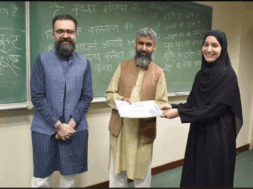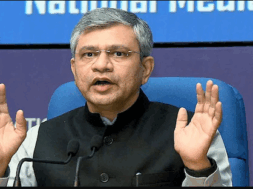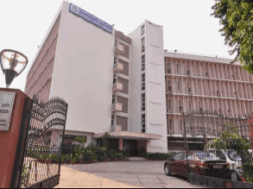
Did ‘Their’ Guru Tegh Bahadur Save ‘Our’ Hindu Dharma?
Introduction: The Hinduphobia of Modern Sikh Politicians and Scholars
Many Sikhs today treat their religion as sui generis right from the time of Guru Nanak. In other words, they hold that Guru Nanak and his ten successors were Divine Prophets in the Abrahamic mold who were given a unique revelation directly by the Lord. This revelation, according to such Sikhs, had no relationship to the predecessor Nāth Yogī, Nirguṇa Sant and Vaishṇava Bhakti traditions. They magnify and even invent differences between Hinduism and Sikhism. They define Sikhism as an incredible advance over the inferior ‘Brahmanical, patriarchal, exploitative, effeminate, ritualistic, and complicated’ Hinduism while claiming that ‘Sikhs do not hate any religion’. It is a strange situation where many Sikhs even disown or downgrade the writings of their own Gurus and scholars because they appear ‘too tinged with Hinduism’. If the Hindu antecedents of even the Guru (Ādi) Granth cannot be denied, they claim that ‘Hinduism is not a religion’, or ‘Nāth Yogīs were not Hindus’[1] or ‘Nirguṇa Sants were not really followers of Hinduism’.[2]
Second, some Sikhs also pretend that their community originated ex-nihilo, i.e., they completely ignore or underplay the Hindu ancestry of practically all Sikhs and the resulting large-scale survival of Hindu culture in their texts as well as in their own lives. Jatts form almost 60% of the Sikh community today. And some Jatt Sikh scholars today go as far as to claim that Jatts had no organic relationship with the Hindu caste hierarchy’ at the time of the Gurus.[3] Of course, this obfuscates the irrefutable fact that all the ten Sikh Gurus were Khatris, all their wives were Khatris and all of their children were married only to Khatris. And yet today, some of the Jatt Sikhs accuse the Brahmana and Khatri origin Sikhs of being disloyal to Sikhism by injecting ‘Hindu elements’ into their faith, while discriminating against the Mazhabi (‘Low Caste’) Sikhs who constitute 25-30% of the population of Punjab but own only 3% of the agricultural land and have a very marginal control over Sikh institutions like the SGPC.
A manifestation of this rampant, modern Hinduphobia among some Sikhs was seen in the Lok Sabha on 9th February 2021 where the Akali Dal politician Harsimrat Kaur Badal shouted, “It was our Guru Tegh Bahadur who got beheaded to save your Tilak and Janeau.” When challenged by a BJP MP that the Gurus belonged to Hindus as well, Harsimrat Kaur angrily rejected the former’s claim and emphasized that the Gurus belonged only to the Sikhs.[4]In other words, Hindus in India were saved from Aurangzeb’s Islamist depredations only because the Guru made the supreme sacrifice for members of a different religious community and did a favor upon us Hindus. Let us examine this claim from a historical perspective.
The Pre-Guruship Life of Guru Tegh Bahadur
Guru Tegh Bahadur (b. 1621) was the youngest of the five sons of the sixth Sikh Guru Hargobind.[5]At the age of 12, he was married to Mata Gujri, who was 9 years old at that time. Nearing his physical end, Guru Hargobind (d. 1644) chose Har Rai, his younger grandson from his third son Gurditta (as the two older sons had died merely at ages eight and eleven) as his successor, bypassing Guru Tegh Bahadur who was actually eight years older to Guru Har Rai, as well as the disobedient and incompetent elder brother of Har Rai named Dhīrmal. After Guru Har Rai died in 1661 CE, his five-year-old younger son Harkrishan was chosen to be the successor although Guru Tegh Bahadur was then forty years old. It is said that after the accession of Guru Har Rai, Tegh Bahadur retired to their ancestral village of Bakala where he lived a life of meditation with Mata Gujri and his mother Mata Nanaki. Guru Hargobind had left with Mata Nanaki his weapons, including his famous sword bearing an engraving of Devi Kali, to be passed on to Tegh Bahadur when he became the Guru later.[6]
According to the tradition, Guru Tegh Bahadur’s original name was Tyag Mal which also suited his saintly and meditative nature. The name Tegh Bahadur (Tegh means ‘sword’) was given to him by his father Guru Hargobind himself for his military prowess showed in a skirmish against the Mughals. Tradition and historical records also state that Guru Tegh Bahadur himself often referred to himself as ‘Degh Bahadur’ (Degh = cooking vessel) due to his constant patronage of the Langar.
In this period of his life, he undertook an extensive pilgrimage to holy Hindu sites around 1656 CE. Sikhs today believe that their religion does not attach much worth to pilgrimages and that if the Gurus visited Haridwar, Varanasi etc., it was merely for the preaching of Sikhism. However, this is a counter-example, where Tegh Bahadur undertook a pilgrimage and sojourn lasting 7 years covering Kurukshetra, Haridwar, Varanasi, Gaya, Prayagraj and then back via Delhi to Bakala in 1663 before he became the Guru. Contemporary records of this pilgrimage are available in Bhat Vahi Talauda and Bhat Vahi Purbi Dakhani[7]. Likewise, Panda Vahi records at Pehowa (Kurukshetra) indicate that Mata Gujri visited the place in Samvat 1727[8] and much later Mata Sundari visited Ganga at Haridwar with her adopted son Ajit Singh.[9]It can be presumed that performance of Hindu ceremonies were the purpose of these trips. Or else, why would their names appear in these religious registers maintained for Hindu families on pilgrimage?
Accession to the Guru’s Throne: Opposition from Members of the Gurughar
Upon the child Guru Harkrishan’s leaving his physical frame[10] at the age of 8 at Delhi in 1664, Guru Tegh Bahadur became the ninth Sikh Guru. The followers of his competitor Dhīrmal (who was also the elder brother of Guru Harkrishan) fired a shot with a rifle at the Guru to kill him but the bullet simply grazed him. In retaliation, the Guru’s followers ransacked the house of Dhīrmal, plundered all his belongings and also snatched the Granth’s original copy and presented it to the Guru. However, the Guru asked them to return everything to Dhīrmal and forgave him. Thereafter, he proceeded to Amritsar to visit the Harimandir. He was able to take a dip in the holy Sarovar but could not enter the shrine itself because its doors were locked by Harji, the Guru of the Meena sect.[11] He returned to Bakala but due to constant opposition by the followers of Ram Rai, Dhīrmal and the Sodhis (the clan to which the last 7 Gurus belonged) there, he journeyed towards the Shivaliks. Guru Tegh Bahadur at first settled at Kiratpur in the Shivalik foothills but there were continued problems from family members, and he had to move away from there to a place called Makhowal. Here, he purchased a plot of land[12] from the widow Rani Champa Devi of Kahlur[13] and laid the foundation of Chak Nanaki in 1665[14] and constructed mansions for his family members to reside. Eventually, during the time of Guru Gobind Singh, a portion of it became the famous town of Anandpur.
The First Arrest of Guru Tegh Bahadur and Another Pilgrimage to Hindu Teerthas
Guru Har Rai had supported Dara Shikoh in the war of succession for the Mughal Throne with his 2200 horsemen and helped him escape. But after Dara lost to his brother Aurangzeb, Guru Har Rai retired to Kiratpur in the Shivalik Hills where he lived under the protection of the Hindu Raja. Aurangzeb nevertheless did not forget the Guru’s help to his brother. Guru Tegh Bahadur too travelled with armed horsemen and hunted, as attested by Sikh as well as Persian records of both Muslims and Hindu writers.[15] His lifestyle drew alarm and hostility from Aurangzeb, who arrested Guru Tegh Bahadur in December 1664 or in the following year. Another reason is given for this first arrest. Whereas the Hindu-Sikh traditions and his own Bani preserved in the Adi Granth strengthen his peaceful and saintly image, the Muslim Persian sources view him as a political and military threat to the Mughal Emperor and allege that the Guru and his followers subsisted themselves by plundering the countryside of the Malwa region.[16]According to the Padshah Buranji, a contemporary Assamese chronicle as well,[17]some Brahmana scholars as well as Muslim Qazis complained to Emperor Aurangzeb about Guru Tegh Bahadur. They alleged that he did not belong to any particular sect or faith recognized by the Emperor and also ravaged the country. Aurangzeb ordered him to appear in the Mughal court but instead, Guru Tegh Bahadur went around plundering the land with his 30,000 followers.[18]As to who these complaining Hindu teachers (‘Bhattacharyas’ as the text calls them) were, the Sikh sources like Mehma Prakash clarify that Dhīrmal and Ram Rai united and constantly complained to Aurangzeb[19] about the Guru as they felt that the Guruship belonged to them and the intervening two Gurus (Guru Hari Rai and Guru Harkrishan) had been usurpers.
Thereupon, Aurangzeb ordered his arrest in November 1665, but he soon got freedom through the intercession of Raja Ram Singh (referred to as ‘Raja Ji’ respectfully in the Hukumnamas of the Guru)[20] who agreed to keep him under his custody (house arrest) and gave a personal guarantee to Aurangzeb but then freed the Guru within a month. After that, the Guru proceeded to eastern parts of India where he camped for some time in Patna with his mother Mata Nanaki and his pregnant wife Mata Gujari.[21] It is clear then that his first confinement was not for advocating the cause of Hindus and his freedom was procured by the surety given by a Hindu Raja.[22]
In fact, Guru Gobind Singh in his autobiography Bachitar Natak included within the Dasham Granth clearly states that Guru Tegh Bahadur and Mata Gujri took this as an opportunity to visit sacred Hindu sites like Prayag where he took sacred dips and performed many pious acts including charity:
mur pit poorva kias payaanaa | bhaanti bhaanti kay teerth nahaanaa ||
jab hi jaat Triveni bhaye | punya daan din karat bitaaye ||
tahi prakaash hamaraa bhayo | Patna shahar vikhein bhava layo || Bachitar Natak 7.1-2ab
Translation: My father travelled towards the east and took the holy dip at several places of pilgrimage. When he reached the Triveni Sangam, he spent several days there performing charity and many meritorious acts. It is there that I appeared (in my mother’s womb) and then I took physical birth later in Patna.
There in Patna, Gobind Das (or Rai), later famous as Guru Gobind Singh, was born on 22nd December 1666.[23] It was indeed a joyous occasion for the family because Guru Tegh Bahadur had been childless for 33 years and Mata Gujri was 44 years of age when she gave birth to her only son.[24] From the context, it is quite clearly that Guru Tegh Bahadur and Mata Gujri had performed a pilgrimage like any other childless pious couple and were resultantly blessed with the next Guru. Other Sikh sources also clearly mention that during this trip to eastern India, Guru Tegh Bahadur also performed the shrāddha ceremonies at Gaya on his way to Assam and as per the custom received a sacred thread from the Pandas at the site, to whom he donated everything he had in charity.[25]After his eastern sojourn, Guru Tegh Bahadur returned alone to the Punjab where he was joined by his family later, after six years.
Of this trip, we have a record in the Vahi of Panda Ram Kishan of Triveni Sangam, Prayagraj in which Guru Tegh Bahadur has written in his own hand that he was of Sodhi caste, Kaushish Gotra, and worshipper of Naina Devi and that Bhoj Raj Purohit is his family Pandit. This is dated Samvat 1719. Sixteen years later, on his way back to Anandpur, Guru Gobind Singh stopped at the same site and inscribed in that Vahi in his own handwriting that he witnessed the signatures of his father, and then added his own. He also acknowledged the Pandit as his family priest. The translator of these records therefore draws this logical conclusion:
“The inescapable inference derived from these entries is the documentary proof (unless their validity is contradicted with some authentic contemporary historical evidence) that the Sikh Gurus in course of their sojourns used to pay visit to important places of Hindu Tirthas. They also appointed their family Purohits on these stations. They laid clear directions for their descendants and the Sikhs visiting these places to honor and acknowledge the Purohits appointed by them.”[26]
The Martyrdom of Guru Tegh Bahadur for His Hindu Dharma
It was his second arrest 10 years later when the Guru was martyred for defending the Hindus’ right to practice their religion. In the Bachitar Natak, Guru Gobind Singh mentions that his father preferred to sacrifice his life to save ‘his/their’ Tilak and Janeu and refused to perform cheap miracles to save his life. As to whether ‘taka’ (‘his/their’) refers to the Guru himself or to others has been recently subjected to some controversy. Sikh tradition, recorded in contemporary Bhat Vahis[27] asserts that a delegation of 16 Kashmiri and other Brahmanas led by Pandit Kripa Ram Datt, whose ancestor had hosted Guru Nanak in Pahalgam (Kashmir) approached Guru Tegh Bahadur on 25th May 1675 and requested his help to protect their religion in the face of intense Islamic persecution in their homeland.[28] At the inspiration of Guru Gobind Singh, Guru Tegh Bahadur agreed to support them saying that if Aurangzeb was able to convert him, they would all convert to Islam as well.
Interestingly, the later Persian records by Hindus as well as Muslims and some contemporary Sikh records (like Gursobha of Sainapat) too do not mention any visit by Kashmiri Brahmanas to the Guru though the mention of Guru Tegh Bahadur taking up the cause of Kashmiri Hindus is mentioned fairly early, in 1751, by Kior Singh, a Sikh historian.[29] The Persian accounts of Hindus and Muslims state that the Guru was beheaded when he failed to perform a miracle as demanded by Aurangzeb to prove his holiness. In fact, even Muslim divines were often sentenced to death if they could not perform a miracle within three days. They also give other reasons like Ram Rai constantly poisoning the years of the Emperor against the Guru. The Muslim records are particular demeaning and allege that the Guru was causing loot and mayhem in the Malwa region of Punjab resulting in many complaints against him.[30]They also try to absolve Aurangzeb of wrong doing, blaming the machinations of Ram Rai instead whereas Hindu chroniclers writing in Persian squarely blame Aurangzeb.
The Guru was transported from the Punjab along with his companions Bhai Sati Das, Bhai Mati Das and Bhai Dayal Das to Delhi which they reached on 5th November 1675. There, the Guru’s companions, all Brahmanas, were tortured in most horrific ways in front of his eyes[31] to persuade them to make themselves and their Guru to convert to Islam but they as well the Guru refused. Note that the first two of these companions were Mohyal Chibber Brahmanas from Karyala (close to Katasraj in Pakistan) and the third was presumably a Kashmiri Brahmana. The Karyala Chibber Brahmanas are practically all Hindus today, including many of the descendants of these two martyrs.
Modern Sikh literature exalts the Sikh Guru’s sacrifice for ‘another faith, Hinduism’ but traditional Sikh histories largely depict Guru Tegh Bahadur’s sacrifice as one that he gave for his own faith which was Hindu Dharma. The Sri Gur Pratap Prakash[32] written between 1835-1843 CE by Kavi Santokh Singh, a celebrated Sikh historian has Guru Tegh Bahadur make the following declaration in defiance when he was asked to choose between death and Islam:
Text Translation
Tin te suni Siri Tegh Bahadar, Listen All! Said Tegh Bahadur:
Dharam nibaahani bikhai Bahadar Those who stick to their Dharma are called brave.
Uchatar bhano dharam hum Hindu I know my Hindu Dharma to be the best.
Ati priya ko kim karahi nikandu || How can I forsake that which is very dear to me?
Rashi 12, Ang 474, Verse 34 ||
Lok parlok bikhai sukhdani It (Hindu Dharma) gives immense joy in this world and the next.
Aan na paiyati jaanahi samaani Even life is trivial compared to honor.
Mati mileen murakh mati joi The fool whose intellect is corrupted,
Ise taagahi paamar soi || That idiot alone will forsake it.
Rashi 12, Ang 474, Verse 35 ||
Hindu dharam rakhe jag mahin I will endure harm to establish Hindu Dharma in this world.
Tumre kare binse iha nahin || It will never be destroyed even if you try.
Rashi 12, Ang 475, Verse 6 ||
The Sikh tradition as well as the Persian records from later times state that upon being pressed to perform a miracle, the Guru tied a piece of paper to his neck and said that the sword of the executioner will be ineffective against it because it had a secret incantation written on it. But after he was beheaded, the paper was unfolded, and the words written in it were ‘Sir dia par sirar na diyaa’ which are translated alternately as ‘I gave my head but not the secret’ or ‘I gave my head but not my faith’. These words actually appear in the description of his martyrdom by Guru Gobind Singh himself that we shall see below.
The supreme sacrifice of the Guru for the sake of Dharma was remembered even 29 years later by the descendants of Guru Tegh Bahadur. The little sons of Guru Gobind Singh were captured by Wazir Khan in late December 1704 and were offered a choice between death and conversion to Islam. According to Panth Prakash[33] of Giani Gian Singh (1822-1921 CE), one of the sons said:[34]
Naati hum taun kay bakhyaati jagjaaney sabh | dharmahet diyo jin dilli sar jayihai || aur hum ek baat kahein tab paas saat Turakan banaat jaatey dharma na haaye hai || Turk bhay mare naahiin || Hindu raha marhaahi kaal sabhahun ko khaii hai || taantey ab tum vichaar karo chaar din Jeevan kay het hum dharma kyon gavaai hai ||
“It is well known in this world that we are the grandchildren of Guru Tegh Bahadur who went to Delhi and got himself beheaded rather than forsake his Dharma. Now, this group of Turks (Muslims) have threatened us with death but this Dharma will not go away. We will not die merely for fear of Turks. We will remain Hindus till death. Time devours everyone one day. Respected brother, reflect that for this life of four days, why should we lose our Dharma?”
Many Sikhs today will dismiss even their own traditional historians due to the ‘Hindu tinge’ of their accounts and will accept only what is written by their Gurus. Now, Guru Gobind Singh describes his father’s martyrdom in the following words in the Bachitar Natak:
Original Text Literal Translation
Tilak janju raakhaa Prabha taaka | The Lord saved his Tilak and Janeau
Keeno bado kaloo maih saakaa || He did a great sacrifice in this Kali (yuga).
Saadhan heti iti jini karii | For the virtuous he did the great deed.
Seesu diiaa par sii na uchaarii || 5.13 He gave his head but did not even utter a sigh.
Dharam heti saakaa jin kiiaa. For Dharma, he sacrificed himself.
Seeshu diiaa par sirar(u) na diiaa || He gave his head but did not give the secret (faith).
Naataka chetak kiiye kukaajaa | Performance of evil acts, trickery, miracles –
Prabha logan kah aavat laajaa || 5.14 The people of the Lord shy away from.
Thiikari phoi Dilees siriiPrabh pur kiyaa payaan | Smashing the potsherd (of his body) on the head of the King of Delhi, he departed for the abode of the Lord.
Teg Bahaadur sii kriaakarii na kin-huun aan || 5.15 This deed similar to Tegh Bahadur’sNo one else could ever do.
Teg Bahaadur ke chalatbhayo jagat ko sok || With the departure of Tegh Bahadur, the world was full of grief.
Hai hai hai sabh jag bhayojai jai jai sur lok || 5.16 Hai Hai Hai (sighs of sorrow) filled the entire world.Jai Jai Jai (shouts of victory and joy) filled the realm of the Devas (Heaven)
The beautiful poetry, full of pathos, fills the perceptive readers’ eyes with tears. Note that the verses say that it was the ‘Lord’ (Prabh) who saved ‘taka’ Tilak and Sacred thread. The word ‘Taakaa’ could mean ‘his’ or ‘their’ but as there is no referent for ‘their’, it is more appropriate to translate it as ‘his’. But that would be opposed to the modern Sikh belief, contrary to all historical evidence, that their Gurus never wore the Tilak and Janeau. Note also the fact that Guru Gobind Singh says that his father gave up his life ‘for the sake of Dharma’ and does not feel the need to mention that this was the ‘Hindu’ Dharma of another community different from his own.
It would be interesting to see how various translators enhance the assumption that Guru Tegh Bahadur gave up his life for that of ‘another community – the Hindus’.
Translation by Macauliffe[1] Translation by S S Kohli[2]
He protected the frontal marks and sacrificial threads of the Hindus. And displayed great bravery in this Kal age.
When he put an end to his life for the sake of holy men,
He gave his head but swerved not from his determination.
God’s people would be ashamed.
To perform the tricks of mountebanks and cheats.
Having broken his potsherd on the head of the King of Dehli he departed to paradise.
No one else coming into this world acted like Teg Bahadur.
The world was in mourning for the demise of Teg Bahadur.
There was weeping for him in the whole world but rejoicing in paradise. He protected the forehead mark and sacred thread (of the Hindus) which marked a great event in the Iron Age.
For the sake of saints, he laid down his head without even a sigh.
For the sake of Dharma, he sacrificed himself. He laid down his head but not his creed.
The saints of the Lord abhor the performance of miracles and malpractices.
Breaking the potsherd of his body on the head of the king of Delhi (Aurangzeb), He left for the abode of the Lord.
None could perform such a feat as that of Tegh Bahadur.
The whole world bemoaned the departure of Tegh Bahadur.
While the world lamented, the gods hailed his arrival in heavens.
One can easily see that the words ‘of the Hindus’ are extraneous insertions by both these translators. Further, whereas the original text says that the Lord (Prabh) saved the Tilak and the Janeau, these two misleading translations say that Guru Tegh Bahadur saved them. In all the preceding verses of the Bachitar Natak, the word ‘Prabh’ is uniformly used for the Lord and not for the Guru at all and therefore in the present verses too, it refers to the Lord. These preceding verses all describe the passing away of the previous Gurus as returning to ‘Prabh’. Once we accept the logical ‘Prabh = Lord’, the translation of ‘taakaa = of the Hindus’ becomes absurd automatically. In view of the traditions of the Gur Pratap Suraj Granth and the Panth Prakash of Giani Gian Singh (a Nirmala Sikh), our interpretation seems appropriate. Moreover, who are these ‘saadhs’ for whom the Guru made the supreme sacrifice? Today, Sikhs use the words ‘saadh-sangat’ for congregations in the Gurudwaras but in this passage of the Dasham Granth, it most likely refers to the group of Brahmanas who visited the Guru for his help. However, it must be stated that the Sri Gur Panth Prakash of Rattan Singh Bhangu (d. 1864), an Akali Nihang, interprets the sacrifice of Guru Tegh Bahadur as an act of favor to the Hindus. He consciously refers to Sikhism as a third religion distinct from Hinduism that was created by Guru Gobind Singh as the Khalsa in April 1699.[37] This work was composed in 1860s.[38]
Arguing that the Gurus never adorned themselves with the Tilak is absurd. Their succession ceremony itself was performed by application of the Tilak on the forehead of the next Guru. Many old portraits and paintings of the Gurus show them with the Tilak on their forehead and a sacred thread on them.[39] It was only with the formation of the Khalsa in April 1699 that the sacred thread and the Tilak were discarded. Even the celebrated incident of Guru Nanak rejecting the sacred thread, as claimed by some Sikhs from their reading of the Janamsakhis of Guru Nanak is rejected by a critical Sikh scholar[40] who collates all the parallel passages and proves that the Guru did wear the thread but emphasized that it cannot save anyone from evil actions. In fact, according to Giani Gian Singh’s Panth Prakash, even Guru Gobind Singh wore the sacred thread at the time of his wedding.[41]
It is said that the decapitated body of Guru Tegh Bahadur lay exposed to the elements, guarded by Mughal soldiers till a blinding storm hit Delhi that night.[42] In the confusion, two Labana Jāti father-son duo (Lakhi Shah and Nagahiya), who were quite wealthy and also employees of Aurangzeb, seized the opportunity. They quickly hid the body in a cart of hay and rushed to their home in the village of Rakabganj. After saying prayers, they burnt their own mansion to provide a funeral to the headless body of the revered Guru.[43] In that same confusion, Bhai Jaita, who was a royal sweeper and of Ranghretta Jati, grabbed the head of the Guru and rushed towards Punjab, where Guru Gobind Singh cremated it with religious ceremonies at Chak Nanaki (the future Anandpur) on 16th November 1675. As the head was being carried towards Punjab, the Mughal troops were in hot pursuit. Bhai Jaita reached a village near Sonipat and asked the Hindu villagers to help. A Hindu Jat named Kushal Singh Dahiya, who resembled the Guru considerably, offered his head to fool the pursuing army. He was beheaded and his head displayed as a ruse while Bhai Jaita reached Chak Nanaki (aka Anandpur) where Guru Gobind Singh cremated it with reverence. Today, hardly any Sikh will know about the sacrifice of Kushal Singh Dahiya although the local government of Haryana recently constructed a memorial to him.[44]
The Intensification of Persecution of Hindus after the Guru’s Sacrifice
Rattan Singh Bhangu claimed in the Pracheen Panth Prakash that the persecution of Hindus calmed considerably after the sacrifice of the Guru, but historical facts tell us the opposite story. Today, some Sikhs taunt Hindus insultingly, “Our Guru sacrificed his life for your religion because you were yourselves incapable of doing so.” How true is this claim from a historical perspective? Did the persecution of Hindus stop after 16th November 1675?
The fact is that the persecution by Aurangzeb increased whereas Hindu revolts continued to occur in other parts of India. In 1677, Aurangzeb introduced further measures for Islamization of the polity like banning music and dancing at the court etc. The status of Qazis in the administration was enhanced. Zakat continued to be levied from Hindus to benefit Muslims, who were exempted from it. In early 1679, the temple of Khandela at Shekhawati was demolished as were others. In April 1679, Jaziya was re-imposed on the Hindus after a lapse of more than a century! Between February 1679 and June 1681, numerous temples in Rajasthan were destroyed. Thereafter, the temple destruction spree continued till the end of his reign and death in 1707 from Kabul to Malwa. Orders were issued to destroy the Jagannath Mandir at Puri although the locals simply covered the sanctum sanctorum with a wooden door and stopped the worship till the Emperor’s death. In 1682, the famous temple of Bindu Madhav at Varanasi was demolished. In 1687, the temples of Golconda were destroyed and those in Maharashtra in 1690. The Hindu rulers of Bikaner and Amber, while serving the Emperor in Deccan, tried their best to rescue Murtis and Hindu manuscripts from destruction by moving them to their own palaces in Rajasthan. In 1693, the Hatakeshvar Mandir at Vadnagar, the Kula-devata of Nāgara Brahmanas of Gujarat, was plundered. And even in 1705 CE, the same year that Guru Gobind Singh lost all his four sons, Aurangzeb issued orders to destroy the Vithoba Mandir at Pandharpur and slaughter cows at the site. During this entire period, he compelled many Hindus to convert to Islam to save their lives, property, family, imprisonment, employment. In eastern Punjab itself, from where Guru Tegh Bahadur hailed, numerous Hindu Zamindars were compelled to become Muslim to save their landholdings.[45]
Sikh writers like Rattan Singh Bhangu and most modern Sikhs declare and believe that it was due to the martyrdom of Guru Tegh Bahadur that Hinduism could survive on this earth. The historical chronology of persecution of the Hindus however suggests otherwise. As we can see above, the supreme sacrifice of Guru Tegh Bahadur failed to produce the desired result. The persecution of the Hindus intensified and there were many other factors including the martyrdom of Guru Tegh Bahadur Ji that saved the Hindus as the dominant community of India.
Demeaning the Sikh Gurus through Divisive Politics
Kashmiri Hindus had approached the Guru because they saw him as a leader of their own community, and not as a spiritual leader of some other religious community. If Guru Tegh Bahadur was seen as a non-Hindu, the Hindus would have rather gone to someone else whom they thought of as being Hindu. When we Hindus are grateful to Guru Tegh Bahadur, it is not because he was a Guru of another faith who was martyred for our sake but because he was our Guru who preferred to lose his life for the sake of our collective faith.
No matter how hard divisive politicians like Harsimrat Kaur try, they will not succeed in getting tens of millions of Hindus throw out the images of the Gurus and ‘gutkas’ of Gurbani from their homes. We worship the Gurus and cherish their teachings not because we want to impress and cajole the Sikhs but because we see the Gurus as a part of our sacred, hallowed spiritual traditions sanctified by thousands of Rishis, Sants, Bhaktas, Acharyas and Gurus, of who the ten Sikh Gurus are shining exemplars. If Harsimrat wants to cure her Hinduphobia, she can start by changing her name, which is just a modification of the Sanskrit word ‘Hari-Smriti’.
When Guru Nanak was described as ‘Guru of the Hindus, Pir of the Muslims’, Sikhs were not excluded. Rather, they were included within the Hindu community because they too refer to him as ‘Guru’. When Mian Mir was supposedly asked to lay two bricks within the foundation of the Harmandir, Guru Arjan Dev was being inclusive by inviting a Muslim Sufi. But that does not mean that he excluded Hindu representatives because he himself was representing the Hindus. Sikhs and Hindus are one. The lotus feet of the Sikh Gurus sanctified every part of India. Although the Sikh faith is confined to a small geographical part of India and is followed by less than two percent of Indians, Guru Tegh Bahadur is referred to as the ‘Hind ki Chaadar’ – the protector of the entire land of India. When a politician claims that Guru Tegh Bahadur did a ‘favor’ on ‘another community’ by making the supreme sacrifice, she thereby demeans the martyrdom of our Guru who gave his all for the sake of the universal Dharma that he shared with us.
To such politicians, I would like to suggest reading the following compositions of Guru Tegh Bahadur wherein, like other Sikh Gurus, he draws inspiration from the Shrīmad Bhāgavata Purāṇa:
“Man’s sufferings are eliminated only by the recitation of Hari’s name. Understand in your heart that sinners like Ajamīla and Gaṇikā (the courtesan) attained Moksha only because they remembered Him. The troubles of Gajendra disappeared in a moment when he glorified Rama. The child Dhruva listened to Rishi Nārada’s instructions and got lost in singing his praises. As a result, he attained the eternal, immortal and a fearless state, and the entire world was amazed. Says Nanak – Hari is the protector of his Bhaktas, and know that he is near you” — Guru Tegh Bahadur in Guru Granth Sahib[46]
-From – Indiafacts.org
